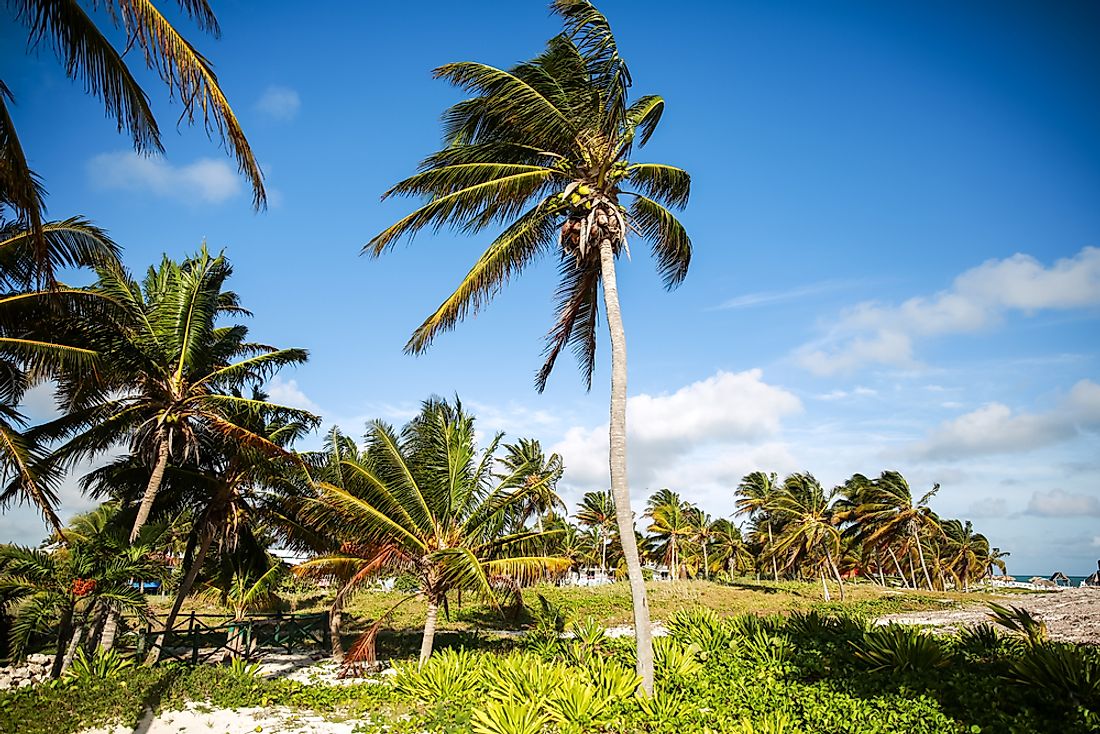What is a Tropical Climate?

Some people assume the word tropical climate refers to their favorite warm vacation spot. However, this is a bit far from the truth since the word tropical is defined differently in meteorology. A tropical climate is identified as a climate characteristic to the tropics; that is from the equator to the Tropic of Capricorn in the south and from the Equator to the Tropic of Cancer in the north. The Koppen climate classification defines a tropical climate as a non-arid climate in which the mean temperature is about 64°F throughout the year. Unlike subtropical regions which are characterized by variations in temperature to different degrees and day length, temperatures in tropical climates, remain relatively constant all year long as variations for different seasons are dominated by rainfall. Tropical climates comprise of only two seasons which are the dry season and the wet season. Changes in solar angle are small in tropical climates which happen to be frost-free.There are different varieties of tropical climates within the tropical climate zone. The different varieties are based on precipitation. Here are the three subtypes of tropical climates.
The Tropical Wet and Dry Climate
Also known as the Savannah climate, the tropical wet and dry climate experiences a long dry period and less annual rainfall. The driest month in a wet and dry tropical climate has precipitation of less than 2.4 inches and less than 3.9 inches total annual precipitation. The tropical wet and dry climate are mainly found in Lagos, Nigeria; Bangalore, India; Dar es Salaam, Tanzania; Barquisimeto, Venezuela; Darwin, Australia; Honolulu, US; Fort Myers, Florida; Rio de Janeiro, Brazil; and Kupang, Indonesia among others.
The Tropical Monsoon Climate
A tropical monsoon climate is the type of climate found in the Southern and Central regions of America and the Southeast and Southern parts of Asia as well as parts of Australia and Africa. The tropical monsoon climate is influenced by the monsoon winds which according to the seasons change directions. For this part of the equator, the driest month of the tropical monsoon climate occurs either soon after or at the ‘winter’ solstice. Rainfall is usually less than 2.4 inches but exceeds 3.9 inches total annual precipitation. Examples of the area that experience tropical monsoon climates include Jakarta, Indonesia; Miami, Florida; Abidjan, Ivory Coast; Puerto Ayacucho, Venezuela; Chittagong, Bangladesh; Yangon, Myanmar; Cairns, Australia; and Macapa, Brazil among others.
Tropical Rainforest Climate
The tropical rainforest climate is found in places that are around the equatorial region usually between 5° to 10° latitude of the equator. However, in several eastern coastal regions, such climates might extend beyond 26° from the equator. Tropical rainforest climates are mainly characterized by low-pressure systems since they are dominated by doldrums thus receiving rainfall all year long. There is no specific season found in the tropical rainforest climate. All 12 months in this type of climate have an average precipitation of at least 2.4 inches.Examples of areas with tropical rainforest climates include Mbandaka, Congo; Singapore; Klang, Malaysia; Hilo, Hawaii; Innisfail, Australia; Apia Samoa, Davao, Philippines; Bogor, Indonesia among others.
Exceptions
Due to different reasons or rather causes, there are some regions within the tropics that do not have a tropical climate; they include alpine regions and some desert areas. Examples of places that do not have tropical climates include the Sahara Desert, the Southern parts of the Arabian Peninsula and Alpine regions found in the tropics. Similarly, some mountain tops located within the tropics can be cold, for example, Mount Kenya. However, there is less seasonal variation in places located around the lowlands in the tropics.











